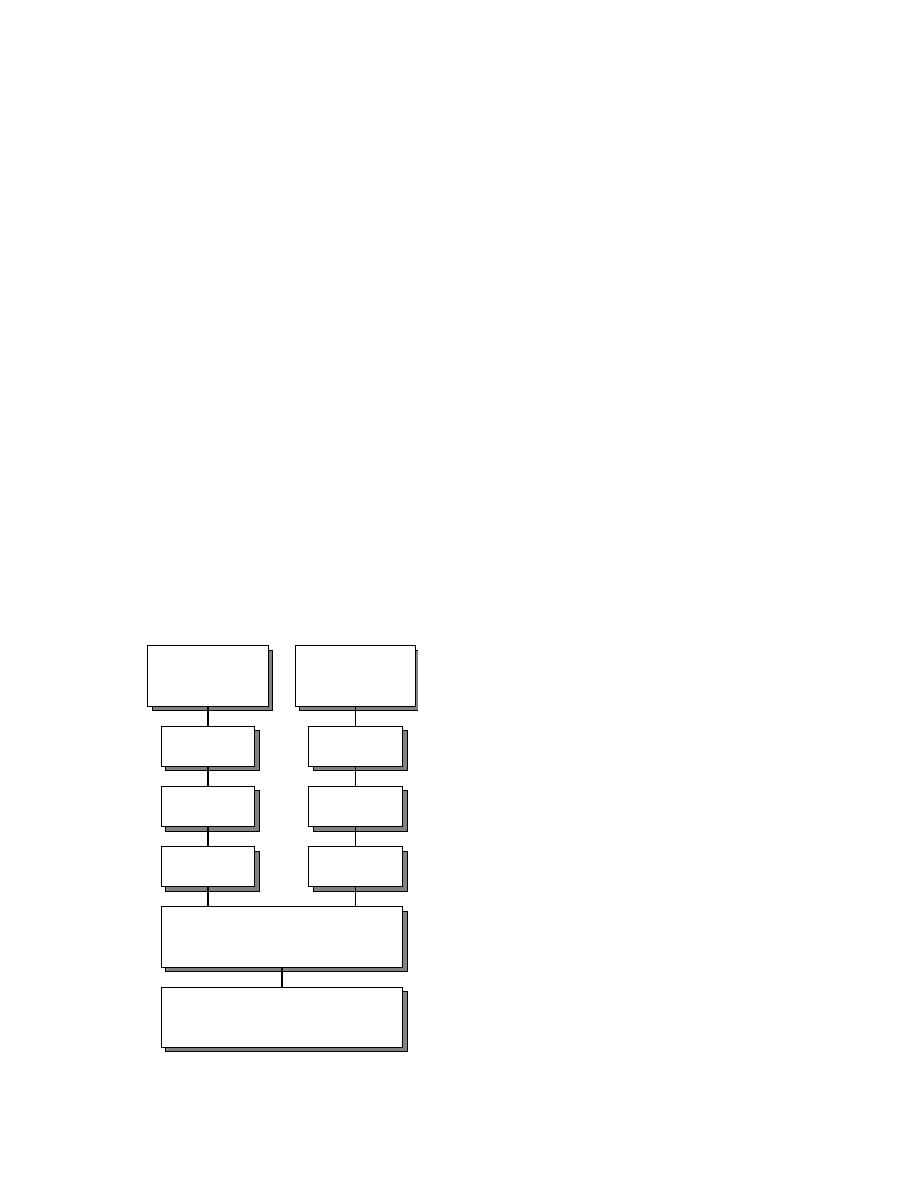
our knowledge of the mechanisms of freezing
were planned to define the parameters that deter-
and the moisture regime of typical masonry built
mine whether a newly placed masonry system
in cold weather. The field application demon-
will be harmed by cold weather. The active ingre-
strated the use of antifreeze admixtures in winter
dient in the mechanism of frost damage is water.
masonry construction.
Therefore, the experimental work followed the
moisture content of mortar and masonry units
from the mixing operation to the masonry assem-
LABORATORY EXPERIMENTS
bly stage through the curing period. The experi-
ments also evaluated the practicality of using
Absorption
antifreeze admixtures, originally designed for
Objective
cold-weather concrete, in masonry mortars. The
Dry mortar is immune to frost damage; water-
final objective was to transfer findings through re-
saturated mortar is susceptible to frost damage.
ports, conference papers, and updates to masonry
At the time of placing, mortar is water saturated,
construction manuals.
and therefore frost susceptible. To define the tran-
sition between susceptibility and immunity, three
Approach
fundamental parameters needed to be defined: a)
The experimental work in this project consist-
the maximum water content that mortar can have
ed of two major stages: a series of laboratory
without frost damage, b) the time needed for
experiments, and a field application. As shown in
mortar to dry to any given moisture content, and
Figure 1, the laboratory experiments were divided
c) the major factors that determine the rate of
into two sections. Section 1 evaluated the effect of
mortar moisture loss. One of these factors is the
low temperatures on conventional masonry, and
absorption of mortar moisture by the masonry
section 2 evaluated the usefulness of antifreeze
units. The objective of this section of the report is
admixtures. The laboratory experiments were a
to develop correlations of mortar moisture con-
series of tests, each designed to produce informa-
tent versus time for mortar placed between typi-
tion useful to better define the minimum thermal
cal masonry units.
protection requirements for cold weather
masonry construction. The test results enhanced
Mortar types and mixture proportions
ASTM C 270 lists four types of mortar (M, S, N,
and O) specified under each of two types of ce-
Section 1
Section 2
ment blending methods: on-the-job blending of
Conventional
Antifreeze
portland cement and lime (PCL), and factory pre-
Masonry
Admixtures
blended masonry cement (MC). Two mortar mix
design methods are in common use: the propor-
tion method and the property method. The
Compressive
Absorption
Strength
proportion method specifies certain volumes of
portland cement, hydrated lime, and sand to be
mixed with water to achieve a certain degree of
Freezing
Bond
workability. Alternatively, prebagged masonry
Strength
Strength
cement (MC) can be used together with sand and
water to achieve the same effect. The property
method allows for the use of alternative volume
Durability
Durability
combinations, provided laboratory test mortar
achieves the prescribed values for strength, water
retention, and air content. The proportion meth-
Field
od was used for the mortar mix designs of this
Demonstration
project.
Hydration and strength development rates are
reduced as ambient temperatures drop. Gener-
ally, no specific rules are given for selecting a
Technology
Transfer
mortar type for use at low temperatures. How-
ever, it is acknowledged that higher portland
cement contents promote higher strengths at low
Figure 1. Research plan.
temperatures compared with similar mortars
2



 Previous Page
Previous Page
